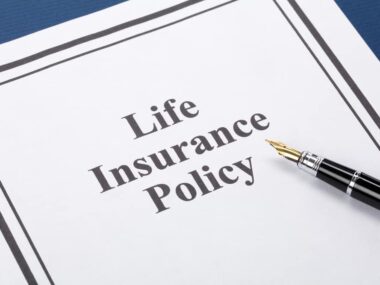Insurance plays a crucial role in providing financial protection and peace of mind to individuals and businesses alike.
It serves as a safety net against unexpected events and potential risks. With a wide range of insurance options available, choosing the right ones can be a daunting task.
In this article, we will explore the top five types of insurance that everyone should consider, each with its unique benefits and coverage areas.
Health Insurance
Healthinsurance is an essential type of insurance that provides coverage for medical expenses.
It is designed to protect individuals and families from the potentially high costs associated with healthcare. Here are some key aspects of health insurance to consider:
a) Medical Coverage
Health insurance typically covers a wide range of medical services, including hospitalization, surgeries, doctor visits, specialist consultations, laboratory tests, and prescription medications.
The coverage may vary depending on the specific plan and insurance provider. Some policies also include coverage for preventive care services, such as vaccinations, screenings, and wellness check-ups.
b) Financial Protection
One of the primary benefits of health insurance is that it offers financial protection against unexpected medical expenses.
In the event of an illness, injury, or medical emergency, health insurance helps offset the costs associated with treatments, procedures, and hospital stays. Without insurance, these expenses can quickly accumulate and put a significant strain on your finances.
c) Network of Healthcare Providers
Health insurance plans often have a network of healthcare providers, including doctors, hospitals, clinics, and specialists, with whom they have negotiated contracted rates.
These providers are referred to as “in-network” providers. Visiting in-network providers can result in lower out-of-pocket costs for policyholders.
Some plans also offer coverage for out-of-network providers, but the reimbursement rates may be lower, and the policyholder may have to pay a higher portion of the expenses.
d) Premiums, Deductibles, and Co-payments
Health insurance operates on a system of premiums, deductibles, and co-payments. Premiums are the regular payments you make to maintain the insurance coverage.
Deductibles are the amount you need to pay out-of-pocket before the insurance coverage kicks in. Co-payments are fixed amounts you pay for specific services at the time of receiving care, such as a doctor’s visit or prescription medication.
Understanding these terms and evaluating their affordability is crucial when selecting a health insurance plan.
e) Employer-Sponsored or Individual Policies
Health insurance can be obtained through employer-sponsored plans or individual policies. Many employers offer health insurance benefits to their employees, where the cost is often shared between the employer and employee.
These plans may provide a range of coverage options to choose from. Alternatively, individuals can purchase health insurance directly from insurance companies or through government marketplaces, such as the Affordable Care Act (ACA) in the United States.
Individual policies allow for more flexibility but may require more research to find the right plan at the desired price point.
f) Government Programs
In some countries, government programs provide health insurance coverage to eligible individuals and families. Examples include Medicare and Medicaid in the United States, the National Health Service (NHS) in the United Kingdom, and the Canadian Health Care system.
These programs offer varying levels of coverage and eligibility criteria based on factors such as age, income, and citizenship status.
In summary, Health insurance is a critical type of insurance that protects individuals and families from the financial burden of healthcare expenses.
It provides access to necessary medical services and ensures that you receive appropriate care when needed. Whether through employer-sponsored plans or individual policies, having health insurance is essential for maintaining your well-being and peace of mind.
Auto Insurance
Auto insurance is a type of insurance that provides coverage for vehicles and drivers in the event of accidents, damage, or theft.
It is a legal requirement in most countries to have auto insurance to protect oneself and others on the road. Here are some important aspects of auto insurance to consider:
a) Liability Coverage
One of the primary components of auto insurance is liability coverage, which protects the insured driver in the event they cause bodily injury or property damage to others in an accident.
Liability coverage typically includes two components: bodily injury liability and property damage liability.
Bodily injury liability covers medical expenses, lost wages, and legal expenses for the injured party, while property damage liability covers the repair or replacement costs of the damaged property.
b) Collision Coverage
Collision coverage is an optional component of auto insurance that provides coverage for damages to the insured vehicle resulting from a collision with another vehicle or object, regardless of fault.
This coverage helps cover the costs of repairing or replacing the insured vehicle. Collision coverage is particularly beneficial for newer or more valuable vehicles.
c)Comprehensive Coverage
Comprehensive coverage is another optional component of auto insurance that covers damages to the insured vehicle resulting from non-collision incidents, such as theft, vandalism, fire, natural disasters, or hitting an animal.
It provides financial protection against events that are beyond the driver’s control and not related to accidents. Comprehensive coverage is often required by lenders if you have a car loan or lease.
d)Uninsured/Underinsured Motorist Coverage
Uninsured/underinsured motorist (UM/UIM) coverage protects you in the event of an accident with a driver who either doesn’t have insurance or has insufficient coverage to fully compensate for your injuries or property damage.
This coverage helps cover medical expenses, lost wages, and other damages you may incur as a result of the accident. UM/UIM coverage is particularly important because it provides a safety net when the other driver involved in the accident cannot adequately compensate you.
e) Personal Injury Protection (PIP)
Personal Injury Protection, also known as PIP or no-fault insurance, is a type of coverage that pays for medical expenses, lost wages, and other related costs regardless of who caused the accident.
PIP coverage is required in some states or countries and helps ensure that injured parties receive prompt medical treatment and financial support, regardless of fault. It can also cover costs such as rehabilitation services and funeral expenses.
f) Factors Affecting Premiums
Auto insurance premiums are determined by various factors, including the driver’s age, gender, driving record, location, type of vehicle, and coverage limits.
Drivers with a history of accidents or traffic violations generally pay higher premiums. Additionally, the deductible amount chosen—the amount the insured must pay out-of-pocket before the insurance coverage applies—affects the premium.
Shopping around and comparing quotes from different insurance providers can help find the best coverage at the most competitive price.
In conclusion, Auto insurance is a crucial requirement for vehicle owners, providing financial protection and legal compliance.
It covers liability for injuries and damages caused to others, as well as protecting the insured vehicle against collision, theft, and non-collision incidents.
Understanding the different types of coverage options, such as liability, collision, comprehensive, UM/UIM, and PIP, can help drivers make informed decisions when selecting auto insurance.
By having appropriate coverage, drivers can drive with confidence, knowing they are protected against potential risks on the road.
Home owners or Renters Insurance
Homeownersinsurance and renters insurance are types of insurance policies that provide coverage for individuals who own or rent a property.
While homeowners insurance is designed for homeowners, renters insurance is tailored for individuals who rent their living space. Here are some important points to consider about these insurance types:
a) Property Coverage
Both homeowners insurance and renters insurance provide coverage for the physical structure and personal belongings within the property.
Homeowners insurance covers the structure of the house, including walls, roof, and other permanent fixtures, while renters insurance covers the personal belongings owned by the renter.
This coverage helps protect against risks such as fire, theft, vandalism, and certain natural disasters like storms or lightning strikes.
b) Liability Coverage
Both homeowners and renters insurance typically include liability coverage. Liability coverage protects the policyholder if someone is injured on their property and decides to sue for damages.
It covers medical expenses, legal fees, and other costs associated with a liability claim. For homeowners, liability coverage also extends to accidents or injuries caused by members of the household outside the property.
c) Additional Living Expenses
If your home or rented property becomes uninhabitable due to a covered event, such as a fire or natural disaster, homeowners and renters insurance can provide coverage for additional living expenses.
This coverage helps pay for temporary accommodations, meals, and other necessary expenses while your home is being repaired or rebuilt.
It offers financial support during a challenging time, ensuring you have a place to stay and maintain your standard of living.
d) Optional Coverages
Both homeowners and renters insurance policies offer additional optional coverages that can be added to the base policy. These may include:
Valuable Items Coverage
This coverage provides additional protection for high-value items such as jewelry, artwork, or collectibles, which may have limited coverage under the standard policy.
Flood Insurance
insurance typically does not cover flood damage. However, flood insurance can be purchased separately through government programs or private insurance companies to protect against flood-related losses.
Earthquake Insurance
Similarly, standard homeowners insurance policies generally do not cover earthquake damage.
Depending on the geographical location, individuals may choose to add earthquake insurance to their policy to protect against seismic events.
Identity Theft Coverage
Some insurance companies offer coverage for expenses related to identity theft, such as legal fees, credit monitoring services, and identity restoration assistance.
e) Cost Factors
The cost of homeowners or renters insurance depends on various factors, including the location and value of the property, the deductible amount chosen, the coverage limits, and the individual’s claim history.
Insurance providers assess the risk associated with the property and the policyholder to determine the premium amount. It is essential to review different insurance providers and compare quotes to find the most suitable coverage at an affordable price.
Conclusion,Homeowners insurance and renters insurance provide crucial protection for property owners and renters, respectively.
These policies cover the structure, personal belongings, liability, and additional living expenses in the event of covered perils.
It is essential to understand the coverage limits, optional coverages, and cost factors when selecting homeowners or renters insurance.
By having the right insurance in place, individuals can have peace of mind knowing that their property, belongings, and financial well-being are protected against unforeseen events.
Life Insurance
Lifeinsurance is a type of insurance policy that provides financial protection for your loved ones in the event of your death.
It ensures that your beneficiaries receive a payout, known as the death benefit, which can help cover various expenses and provide financial stability. Here are some important aspects of life insurance to consider:
a) Types of Life Insurance
There are several types of life insurance policies available, including term life insurance, whole life insurance, and universal life insurance.
Term Life Insurance
Term life insurance provides coverage for a specific period, such as 10, 20, or 30 years. If you pass away during the term, the policy pays out the death benefit to your beneficiaries.
Term life insurance is generally more affordable and straightforward compared to other types of life insurance.
Whole Life Insurance
Whole life insurance provides coverage for your entire life. It combines a death benefit with a cash value component that grows over time.
Premiums for whole life insurance are typically higher than term life insurance but remain level throughout the policy’s duration.
Universal Life Insurance
Universal life insurance offers both a death benefit and a cash value component, similar to whole life insurance.
However, it provides more flexibility in premium payments and death benefit amounts, allowing policyholders to adjust them as their needs change.
b) Death Benefit
The death benefit is the payout that is given to your beneficiaries upon your death.
The amount of the death benefit depends on the policy’s coverage amount and can be used by your loved ones to cover various expenses, such as funeral costs, outstanding debts, mortgage payments, daily living expenses, and educational expenses for children or dependents.
c) Beneficiaries
When you purchase a life insurance policy, you will need to designate one or more beneficiaries who will receive the death benefit.
Beneficiaries can be individuals, such as family members or friends, or entities like trusts or charitable organizations. It’s important to regularly review and update your beneficiaries to ensure they align with your current wishes and circumstances.
d) Premiums
Life insurance policies require regular premium payments to keep the coverage in force. Premiums can be paid monthly, quarterly, semi-annually, or annually, depending on the policy and your preference.
The cost of premiums is determined by factors such as your age, health, lifestyle, and the coverage amount. Generally, the younger and healthier you are when you purchase life insurance, the lower your premiums will be.
e) Riders and Additional Coverages
Life insurance policies often offer optional riders or additional coverages that can be added to the base policy for an extra cost. Some common riders include:
Accelerated Death Benefit
Thisrider allows you to access a portion of the death benefit if you are diagnosed with a terminal illness or face certain medical conditions.
Waiver of Premium
With this rider, your premium payments are waived if you become disabled and are unable to work for an extended period.
Child or Spousal Riders
Theseriders provide coverage for your children or spouse, typically with a smaller death benefit amount.
Return of Premium
This rider returns a portion or all of your paid premiums if you outlive the term of the policy.
f) Financial Planning and Estate Protection
Life insurance plays a significant role in financial planning and estate protection. It can provide a source of income replacement, debt repayment, and financial security for your loved ones.
Life insurance proceeds are generally tax-free to the beneficiaries, making it an efficient way to transfer wealth or provide for dependents.
In summary,Life insurance is a crucial tool for financial planning and providing financial security to your loved ones in the event of your passing.
Understanding the different types of life insurance, the death benefit, beneficiaries, premiums, and optional riders can help you make informed decisions when choosing a policy.
Business Insurance
Businessinsurance is a type of insurance coverage specifically designed to protect businesses from various risks and potential financial losses.
It provides coverage for property damage, liability claims, and other business-related risks. Here are some key aspects of business insurance to consider:
a) Property Insurance
Property insurance for businesses covers physical assets such as buildings, inventory, equipment, and furniture against damages caused by perils like fire, theft, vandalism, or natural disasters.
It helps businesses recover and rebuild in the event of property damage or loss. Property insurance may also include coverage for business interruption, which compensates for lost income and extra expenses incurred when a business is unable to operate due to a covered event.
b) General Liability Insurance
General liability insurance protects businesses from claims of bodily injury, property damage, or personal injury arising from their operations, products, or services.
It covers legal fees, settlements, and medical expenses if someone files a lawsuit against the business. General liability insurance is essential for businesses that interact with customers, clients, or the public.
c) Professional Liability Insurance
Professional liability insurance, also known as errors and omissions (E&O) insurance, is crucial for businesses that provide professional services or advice.
It protects against claims of negligence, errors, or omissions that result in financial losses or damages to clients or third parties. Professional liability insurance is commonly used by professionals such as doctors, lawyers, consultants, architects, and accountants.
d) Workers’ Compensation Insurance
Workers’ compensation insurance provides coverage for medical expenses, lost wages, and rehabilitation costs if an employee suffers a work-related injury or illness.
It is typically a legal requirement for businesses with employees. Workers’ compensation insurance protects both employees and employers by ensuring that employees receive the necessary support and benefits in the event of a workplace injury, while employers are protected from potential lawsuits related to workplace accidents.
e) Commercial Auto Insurance
Commercial auto insurance covers vehicles used for business purposes, such as company cars, delivery trucks, or service vehicles.
It provides coverage for accidents, damages, and injuries that occur while using the vehicles for business operations. Commercial auto insurance typically includes liability coverage, collision coverage, and comprehensive coverage, similar to personal auto insurance.
The coverage limits and premiums may vary depending on factors such as the number of vehicles, drivers, and the type of business.
f) Business Interruption Insurance
Business interruption insurance, also known as business income insurance, provides coverage for lost income and expenses when a business is unable to operate due to a covered event, such as a fire, natural disaster, or other significant disruptions.
It helps businesses recover financially by compensating for lost profits, ongoing expenses, and temporary relocation costs during the restoration period.
Business interruption insurance can be crucial for businesses that heavily rely on a physical location or specific equipment to operate.
g) Cyber Liability Insurance
Cyber liability insurance protects businesses against the financial losses and liabilities resulting from cyberattacks, data breaches, or other cyber incidents.
It provides coverage for expenses related to data recovery, legal fees, customer notification, credit monitoring services, and potential lawsuits.
In an increasingly digital world, where businesses store sensitive data and face evolving cybersecurity threats, having cyber liability insurance is essential for mitigating financial risks.
Overall, Business insurance is a critical component of risk management for businesses of all sizes. It provides protection against property damage, liability claims, worker injuries, and other business-related risks.
By having appropriate insurance coverage, businesses can safeguard their assets, minimize financial losses, and ensure continuity in the face of unexpected events.
It is crucial for business owners to assess their specific risks, consult with insurance professionals, and select the right combination of policies to adequately protect their business.
Conclusion
While insurance may seem like an additional expense, it is an investment in safeguarding your future and that of your loved ones.
The top five types of insurance – health, auto, homeowners/renters, life, and business insurance – offer crucial protection against various risks and uncertainties.
When selecting insurance coverage, consider your individual needs, financial situation, and risk exposure to make informed decisions.
By having the right insurance policies in place, you can face life’s uncertainties with confidence, knowing that you have a safety net to fall back on when needed.






